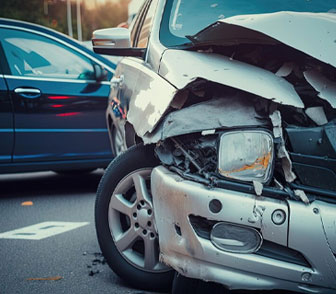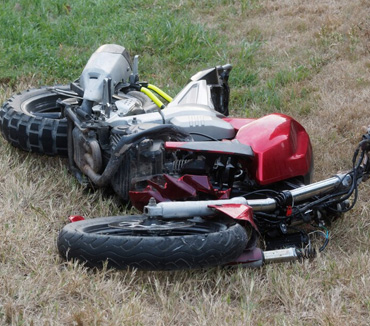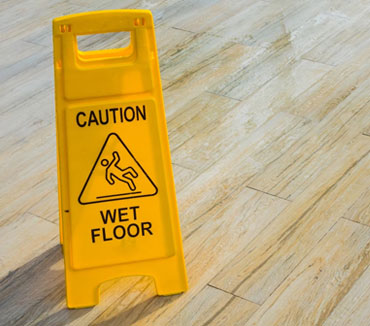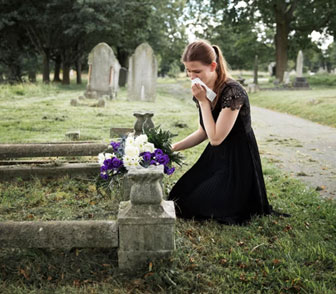May Is Motorcycle Safety Awareness Month
May has been designated as Motorcycle Safety Awareness Month to call attention to the dangers and vulnerabilities motorcyclists face on the roads and highways. Throughout the month of May, the National Safety Council (NSC) encourages drivers to share the road with motorcycles and be extra alert when they are nearby.
The personal injury law firm of Brent A. Duque represent victims injured in a Southern California motorcycle accident, and are immense advocates of this month as we see the results of catastrophic motorcycle accidents and the effect the injuries have on motorcyclist victims and their family throughout the entire spring and summer season.
If you are a motorcycle enthusiast living in the Southern California area, you are blessed with weather that allows you to ride your bike year-round, or at least the majority of it. Yet, some prefer to wait until Spring to break out their bike for the riding season. This makes May the perfect time to think about motorcycle safety. Fortunately, most bikers ride safely. When they are involved in an accident, it is often caused by another motorist.
Whether you have been riding for decades, years or months, it is important to remain focused on safety for your own protection. Below are some tips to help you avoid accidents while you commute to work or take a joy ride to enjoy the picture-perfect landscapes of the Golden State.
Motorcycle Accident Statistics
In 2020, California reported the highest number of personal and commercial motorcycles registered in the country.
The following statistics were provided by the National Highway Traffic Safety Administration (NHTSA) and updated in September 2021.
- 30% of motorcyclists involved in a fatal accident in 2019 were driving without a valid motorcycle license.
- In 2019, motorcyclists involved in a fatal accident had a higher rate of alcohol disability than drivers of all other car types (29% on motorcycles, 20% on cars, 19% on light trucks, 2% for heavy trucks).
- 42% of motorcyclists who died in a single vehicle accident in 2019 were alcoholics.
- In 2019, 4,444 motorcyclists who died in night traffic accidents were almost three times more likely to consume alcohol than motorcyclists who died during the day.
- In states without the Universal Helmet Act, 57% of motorcyclists killed in 2019 did not wear helmets (compared to 9% in states with the Universal Helmet Act).
Some additional statistics:
- Motorcycles represented 14% of the traffic-related deaths in 2019
- Motorcycles makeup three percent of registered vehicles and 0.6 percent of miles traveled, but are involved in 12 percent of all fatal motor vehicle crashes in the United States.
- According to Statista, in 2020, the total number of public, personal, and commercial motorcycles registered in the US states and the District of Columbia totaled approximately 8.32 million.
- Motorcycle deaths make up 11 percent of all roadway deaths.
- Motorcycle riders in fatal crashes are more likely to be male, middle-aged, and Caucasian, compared with drivers in other vehicles.
- Fatal motorcycle crashes are most likely to occur in clear weather, the daylight hours, and the summer months.
- Fatal motorcycle crashes are most likely to involve a moving vehicle (rather than fixed objects, like poles or walls).
- South Carolina is the state with the worst crash rate, and Minnesota is the state with the lowest crash rate.
Tips for Drivers
- Take an extra moment to look for motorcycles. Motorcycle are small and can be easily hidden in a car’s blind spots, so check — then check again — before changing lanes or making a turn.
- Assume that a motorcycle is closer than it looks. A motorcycle may look farther away than it is because of its small size, and it may be difficult to judge a motorcycle’s speed. When checking traffic to turn at an intersection or into (or out of) a driveway, predict a motorcycle is closer than it appears.
- Keep a safe distance. Motorcyclists often slow by rolling off the throttle or downshifting, thus not activating the brake light, so allow more following distance, about 3 to 4 seconds.
- Understand lane shifting. Motorcyclists often adjust position within a lane to be seen more easily and to minimize effects of road debris, passing vehicles, and wind. Understand that motorcyclists adjust lane position for a purpose, not to show off or to allow you to share the lane with them.
- See the person. When a motorcycle is in motion, see more than the motorcycle, see the person under the helmet, who could be your friend, neighbor, or relative.
Tips for Riders
Aggressive motorcycle drivers who take chances are more likely to be involved in an accident, and even those who drive carefully face the risk of an accident. Riding defensively helps you anticipate and prevent hazards and dangerous situations that might lead to injury or fatality. The following tips will help you drive defensively on your next motorcycle ride:
- Stay visible. You cannot assume you are visible to other drivers. Avoid other drivers’ blind spots; Drive with your headlights on even during the day; Wear reflective or bright clothing, and; always use your turn signals and hand signals.
- Be observant and watch for road hazards. Driving defensively enables you to anticipate traffic problems and road hazards. Sand, oil and gravel can make you lose traction. Bumps and potholes are equally dangerous and should also be avoided. Cross railroad tracks at the appropriate angle.
- Gear up every ride. Wear proper riding gear from head to toe. Full-face helmets provide the best protection, and jackets, pants, gloves, and boots that are made for riding will generally be made of abrasion-resistant material, include protective armor, and provide additional comfort.
- Inspect your motorcycle before each ride. It’s a good idea to inspect your bike before you ride to ensure it is as safe as possible. Check your headlights, taillights, turn signals, brakes, fuel, oil, tire pressure, mirrors, handlebars and horn.
- Leave ample space and time for you to respond to other vehicles on the road and also leave enough time and space for them to respond to you. Following too closely on a bike or being followed too closely might be disastrous. If a vehicle is too close behind you, you need to move to the side and let them pass.
- Avoid riding in bad weather; wet roads and high winds make for dangerous roads. Yet, biking in the rain is bound to happen on occasion. If you get caught in the rain, ride on a dry line. The tires from the car in front of you plow the water away and leave a dry line that will give you more traction.
Know Your Bike
One of the best ways to keep you safe on the road is knowing how to handle your bike. This is a learned skill that only gets better as you ride more. It is important that you have a motorcycle that fits your body, which means you should be able to put both feet flat on the ground and reach your handlebars. You should also make sure your bike is not too heavy for you. Assuming your motorcycle is a good fit for you, hone your skills by taking a rider’s safety class. Practice and increase your skills by taking an advanced riding course. You will learn collision avoidance maneuvers, advanced turning, control tips and braking techniques.
Get the Right Gear
As you are cruising around on your motorcycle, only your gear separates you from the road if you get in an accident. The right gear helps reduce injuries and might even prevent them in some cases. Motorcycle gear protects you from the elements, debris and road rash. Appropriate gear includes a DOT-approved helmet, goggles, leather jacket, leather pants or chaps, over the ankle boots and non-slip gloves. Dress in layers to adjust to any changing weather throughout the day.
Get the Help You Need After a Motorcycle Accident
The most important thing to remember about motorcycle accidents is that you must take legal action as soon as possible. Once the accident occurs the clock starts ticking, and if you wait too long, you may mistakenly forfeit your right to seek fair compensation. Call the Law Offices of Brent. A. Duque to discuss your accident and make an informed decision. We can provide the insight and legal help you need.
Common Motorcycle Accident Causes Include:
- Negligent Drivers – Operating a motor-vehicle while under the influence, aggressive driving behavior, violating traffic laws or driving while drowsy are all types of negligent driving
- Defective Motorcycle Parts – Faulty tires, defective brakes or damaged fuel lines can be catastrophic to motorcyclists while riding.
- Dangerous Roads – Potholes, poor lighting, broken signs, loose dirt or gravel or natural debris can cause serious motorcycle accidents.
A Motorcycle Accident Lawyer Can Make All the Difference
If you have been involved in a collision, even if law enforcement comes to the scene, the responding officer may not make a determination of fault in the accident report — or they could even make an incorrect fault determination. And in the absence of any definitive word, if different witnesses say different things, it will not take much for the other driver to claim that the accident was your fault. It may make sense to put your car accident case in the capable hands of an experienced personal injury attorney, who will build your strongest case and put you in position for the best outcome.
If you or a loved one has suffered injury in a motorcycle and have questions about seeking legal action, call us now at 1-877-241-9554 to learn more about your options. A free consultation is just a phone call away.
Request A
Free Consultation
Fields Marked With An ” *” Are Required










